North Atlantic Basin 2023 Seasonal Activity So Far
09/26/2023, 9:12 am EDTPattern Change in The East U.S. Days 11-15?
09/28/2023, 5:35 am EDT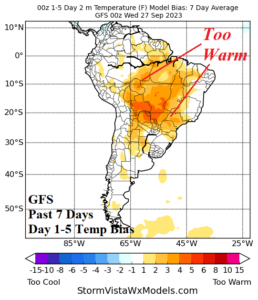
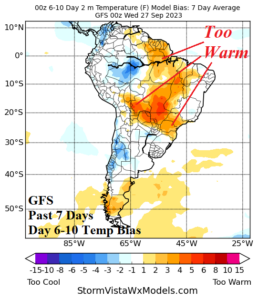
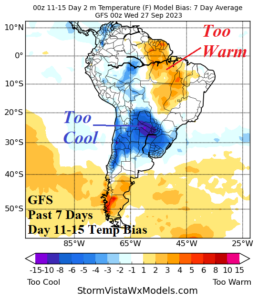
Fig. 1-3: GFS temperature forecast bias during the past 7 days for the 1-5-day, 6-10-day, and 11-15-day intervals.
Discussion: During the week of Sep. 19-25, the verified temperature anomalies across Paraguay averaged an impressive +7C while interior Southeast Brazil was +4C to +7C. However, outside of this very hot region, the temperature anomalies for the week were not nearly as hot. Recent (past 7 days) 1-5-day and 6-10-day temperature anomaly forecasts by GFS are much too warm indicating recent heatwave conditions are more expansive (Fig. 1-2). Other models have a too warm bias but not nearly as strong. Additionally, the 11-15-day forecast bias during the past 7 days was much too cool especially in Paraguay as the model failed to forecast the heatwave (Fig. 3). During the past 2 weeks, all models have over-forecast Uruguay/Southeast Brazil rainfall.
ECM ENS is more skillful in recent temperature outlooks. Reliably, the Brazil forecast is hotter than normal during the next 15 days (Fig. 4). However, the extreme heat indicated by GFS is too strong. The ECM ENS 15-day rainfall forecast is wet in Coastal Southeast Brazil, possibly too wet (Fig. 5).
The synoptic weather pattern across South America features a strong subtropical ridge equally distributed across the northern 40% of South America. At face value, the upper ridge coupled with the strong jet stream stretched across Central Argentina could produce the extreme heat indicted by GFS but over a much smaller area (Paraguay and to the northeast). Short wave energy in the jet stream flow can trigger the Southeast Brazil rain but forecast confidence in the effectiveness of these short waves is a low confidence forecast.
Bottom line? Brazil is hot, but not quite as hot as GFS. Southeast Brazil rainfall is potentially robust but not well-supported by the current weather pattern.
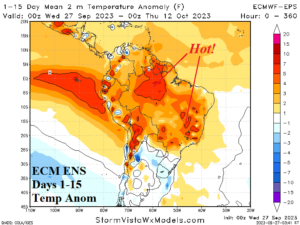
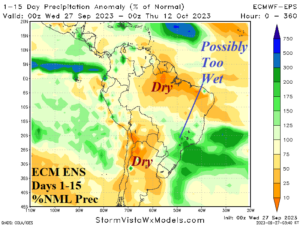
Fig. 4-5: The ECM ENS 15-day temperature and precipitation anomaly forecast across South America.
